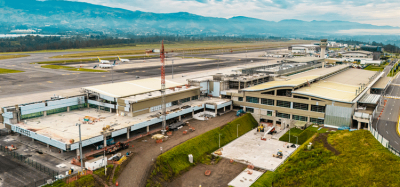First Asian airports achieve net zero, lowering their emissions by over 90%
Posted: 28 August 2024 | Gabriel Higgins | No comments yet
Two airports from India have achieved level 5 certification of the Airport Carbon Accreditation programme, making them the first to do so in Asia, by reducing their CO2 emissions over 90% and reached net zero.


Net Zero
Two airports from India, Indira Gandhi International Airport (DEL) and Kempegowda International Airport (BLR), have achieved the highest level of Airport Carbon Accreditation. Stefano Baronci, Director General of ACI Asia-Pacific & Middle East said: “The two Indian hubs have joined the group of global airports leading the charge in environmental sustainability. The achievements of both Kempegowda International Airport Bengaluru and Delhi International Airport further establish India’s role in air transport’s decarbonisation.”
As aviation is under increasing pressure from growing public and institutional awareness of climate change, DEL and BLR, are the first airports from Asia to achieve this standard placing them among a list of 14 others around the world.
What is the Airport Carbon Accreditation Programme and Level 5?
The ACI is there to facilitate and guide the airport industry’s ambition to reach net Zero CO2 emissions. Level 5 is there to certify that an airport has reached and maintains a net Zero carbon balance on scopes 1 and 2. The ACI follow the Greenhouse Gas Protocol definition of scopes as follows:
Join us live: Shaping the Next Generation of Hold Baggage and Air Cargo Screening
Join us live for an insightful webinar on 11th December at 14:00 GMT, in collaboration with Smiths Detection, as we explore the strategic balance of operational efficiency, regulatory compliance, and sustainability in high-volume security environments.
This session offers a focused look into future-proofing your security strategy.
Key learning points
- Cost Reduction: Strategies to minimize bag travel time while simultaneously reducing operational costs.
- Regulatory Roadmap: Insights into the next wave of regulatory changes and their impact on future investment decisions.
- Sustainable Systems: Practical approaches to building sustainability into security systems and lowering the total cost of ownership (TCO).
- Scalable Solutions: Real-world examples of scalable systems supporting current airport growth and preparing for tomorrow.
Register now for expert insights, case studies, and actionable strategies on operational efficiency!
- Scope 1 emissions are direct emissions from owned or controlled sources
- Scope 2 emissions are indirect emissions from the generation of purchased energy.
For scope 3, level 5 certification is achieved by committing to net zero by 2050 or sooner. Scope 3 is defined as:
- Emissions that are all indirect (not included in scope 2) that occur in the value chain of the reporting company, including both upstream and downstream emissions.
How have Indira Gandhi International Airport and Kempegowda International Airport achieved Level 5 certification?
DEL has achieved a 90% reduction in Scope 1 and 2 CO2 emissions. The remaining emissions have been compensated through approved offset removals, meeting the stringent standards of the Airport Carbon Accreditation programme. The airport is also committed to achieving net zero Scope 3 emissions by 2050, in alignment with the programme’s framework and global sustainability goals.
BLR has achieved a remarkable 95.6% reduction in Scope 1 and 2 emissions — setting a new benchmark as the Indian airport with the highest emissions reduction. This milestone was reached seven years ahead of the initial 2030 target. The airport’s decarbonisation efforts include transitioning to 100% renewable electricity, advancing sustainable mobility, and enhancing green infrastructure. To address residual emissions, it has procured carbon credits from verified carbon removal projects and committed to further compensation through in-house green landscape projects
“These successes result from a long-term vision, a clear roadmap to net zero, and the dedicated efforts of their teams and industry partners. We are confident that these milestones will inspire other airports in our region to embrace sustainability and implement initiatives for a more environmentally responsible aviation industry. ACI APAC & MID remains committed to supporting our members in developing their roadmaps to achieve ambitious net zero targets,” stated Mr Baronci.
Join our free webinar: Revolutionising India’s travel experience through the Digi Yatra biometric programme.
Air travel is booming, and airports worldwide need to move passengers faster and more efficiently. Join the Digi Yatra Foundation and IDEMIA to discover how this groundbreaking initiative has already enabled over 60 million seamless domestic journeys using biometric identity management.
Date: 16 Dec | Time: 09:00 GMT
rEGISTER NOW TO SECURE YOUR SPOT
Can’t attend live? No worries – register to receive the recording post-event.
Related topics
Airport construction and design, Airport development, Cleaner, Greener Airports: Making Aviation More Sustainable Series, Emissions, Green energy, Sustainability


















